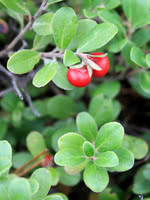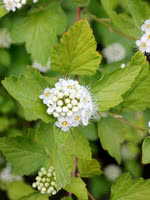Mon-Fri 9am - 5pm Mountain time
Ninebark vs Bearberry
Arctostaphylos uva-ursi
Physocarpus opulifolius
NOT AVAILABLE THIS SEASON - MIGHT RETURN
CUSTOM GROW
Bearberry is a dwarf shrub known for its creamy pink flowers and red edible fruits.
It is great as a filler in gardens and flowerbeds in place of invasive ground cover plants, like English Ivy.
Bearberry will attract hummingbirds, butterflies and bees to your property. It is one of the top 12 plants recommended by the Alberta Native Bee Council to support pollinators.
Ninebark is a small, multi-stemmed shrub, that is used to add texture or colour to any yard.
It features flaky, cinnamon-brown bark, attractive white flowers, and long, maple-like leaves.

